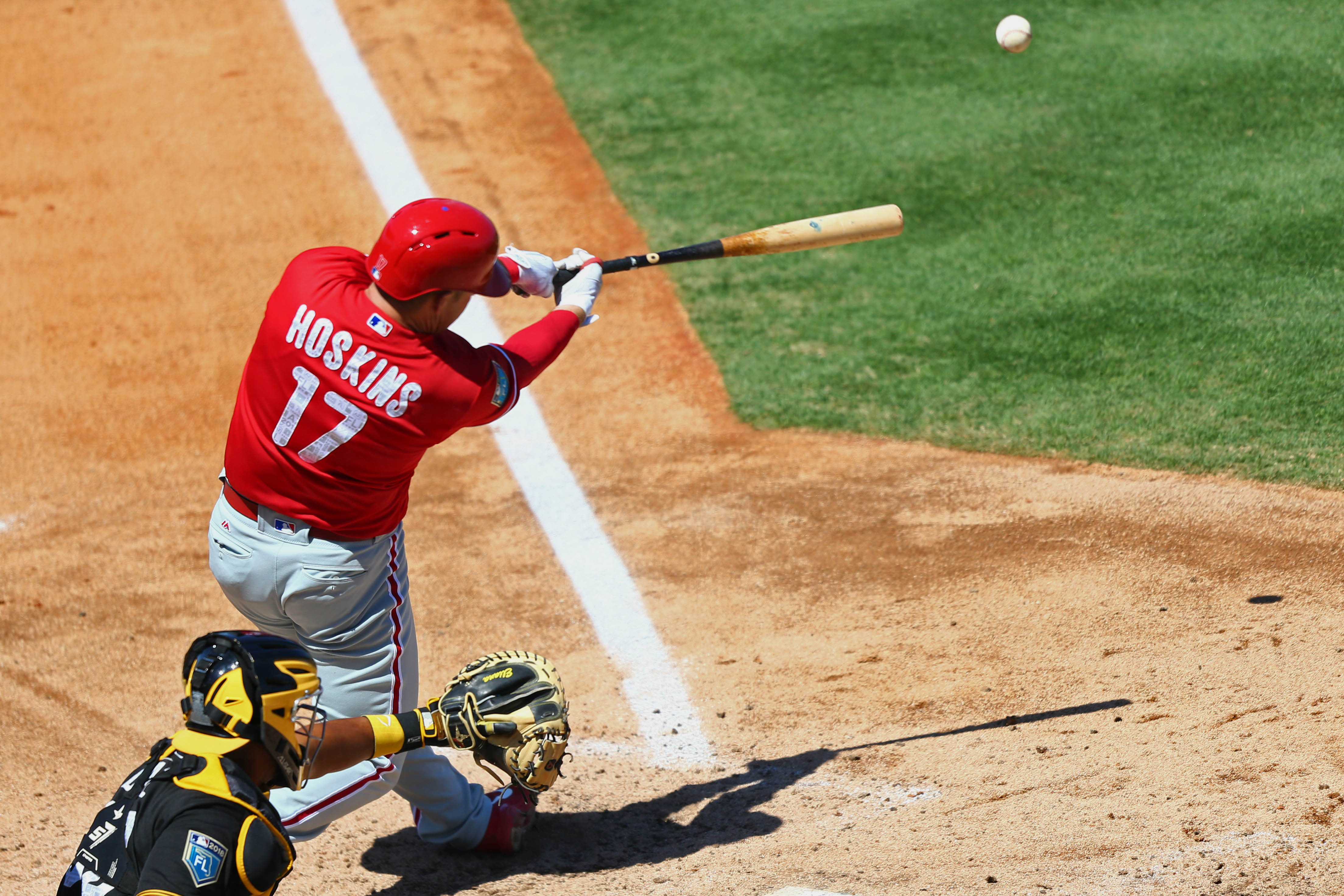It seems ironically appropriate that the season’s first stats preview would be on the team whose new manager is being blasted by fans and the media for his overreliance on statistics. No matter how far the Philadelphia fans’ overreactions to Gabe Kapler’s managerial growing pains go, though, the Phillies are still what we thought they were: A young team on the upswing that has a chance to surprise in the NL East. The numbers bear that out too, as many of their most interesting players are still in their arbitration years. I promise this will not just be a Rhys Hoskins love fest, but he does top the list in this Phillies Stats Preview.
Rhys Hoskins’ offensive dominance: Hoskins’ debut last summer was nothing short of incredible. His .367 True Average was tops in the majors last season among players with at least 100 at bats (including Mike Trout, who was second at .360). He was fifth among rookies in Value Over Replacement Player, despite seeing fewer plate appearances than everyone ahead of him on the list (the highest Mets rookie was Brandon Nimmo at 26th). His homerun pace last year was 51 over a full season, and while that may regress some, he has already picked up where he left off with a strong first series against Atlanta.
Hoby Milner’s fastball: If you did not pay close attention to the Phillies last season, you may not have noticed Milner’s quietly productive 31.1 innings. His peripherals did not match his sterling 2.01 ERA, but his fastball is fascinating, because it works on the extremes of the majors stuff-wise. His velocity was the fourth lowest (89.1) and his vertical movement on his fastball was second worst (3.81 inches) among relievers in 2017, so it would not be surprising if his fastball was little more than batting practice quality (for a Mets frame of reference, Jerry Blevins’ fastball was just a tick faster than Milner’s last year). His horizontal movement, though, was tops in the majors last season (-10.70 inches). As the second lefty out of the Philadelphia pen, look for Milner and his slow, tailing fastball to be used in key situations in the series.
Aaron Nola’s run game: Nola’s stuff is interesting in itself – his curve had the most horizontal movement among starters, his changeup had the third highest groundball percentage and his fastball had the eighth smallest vertical movement in 2017 – but he also led the league in 2017 in a not-so-desirable stat. Nola’s Swipe Rate Above Average of 7.43% was the worst in the majors last season, so look to see if the Mets run on young right-hander.
Quick Hits
The Good: Luis Garcia had the second highest whiffs per swing on his slider last season among relievers (56.25%).
The Bad: Jake Thompson had the third lowest whiffs per swing on his fastball in 2017 (6.1%).
The Ugly: Maikel Franco had the second worst Fielding Runs Above Average for third basemen last year at -9.3 runs.
Mets’ Way too Early Check-In
Yoenis Cespedes and Kevin Plawecki lead the Mets in BWARP with 0.21, good for 30th in the league.
Photo credit: Aaron Doster – USA Today Sports
